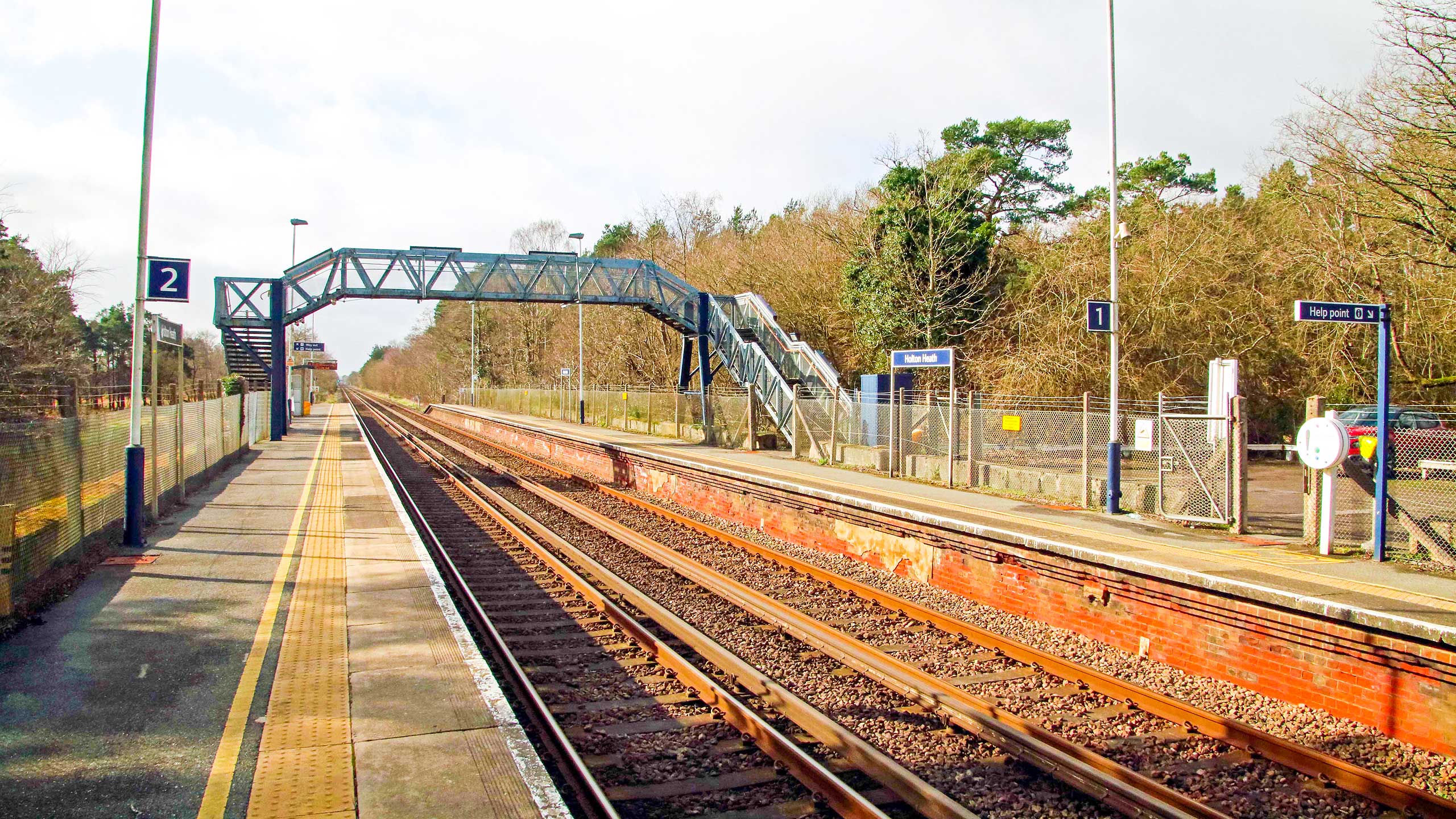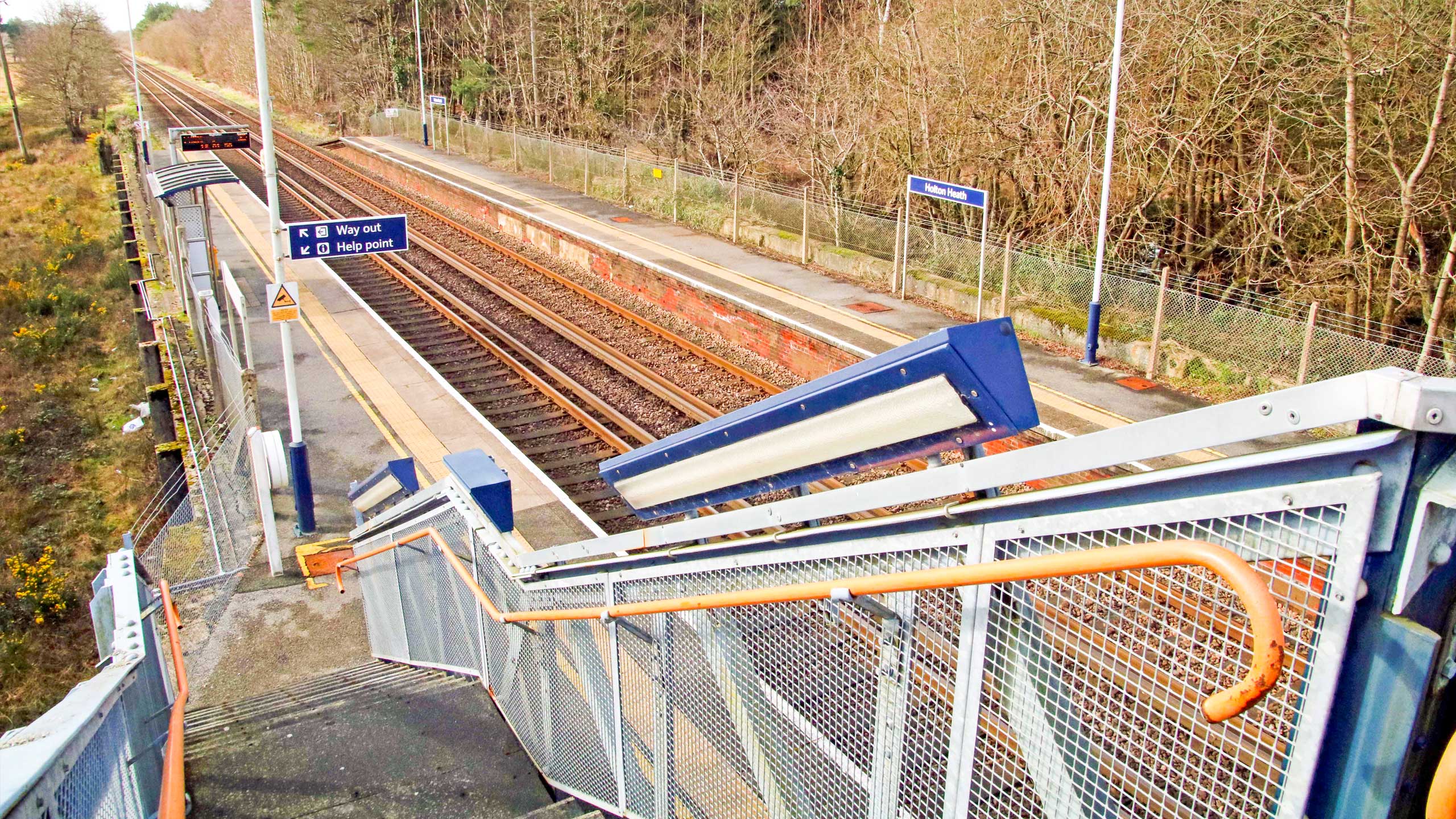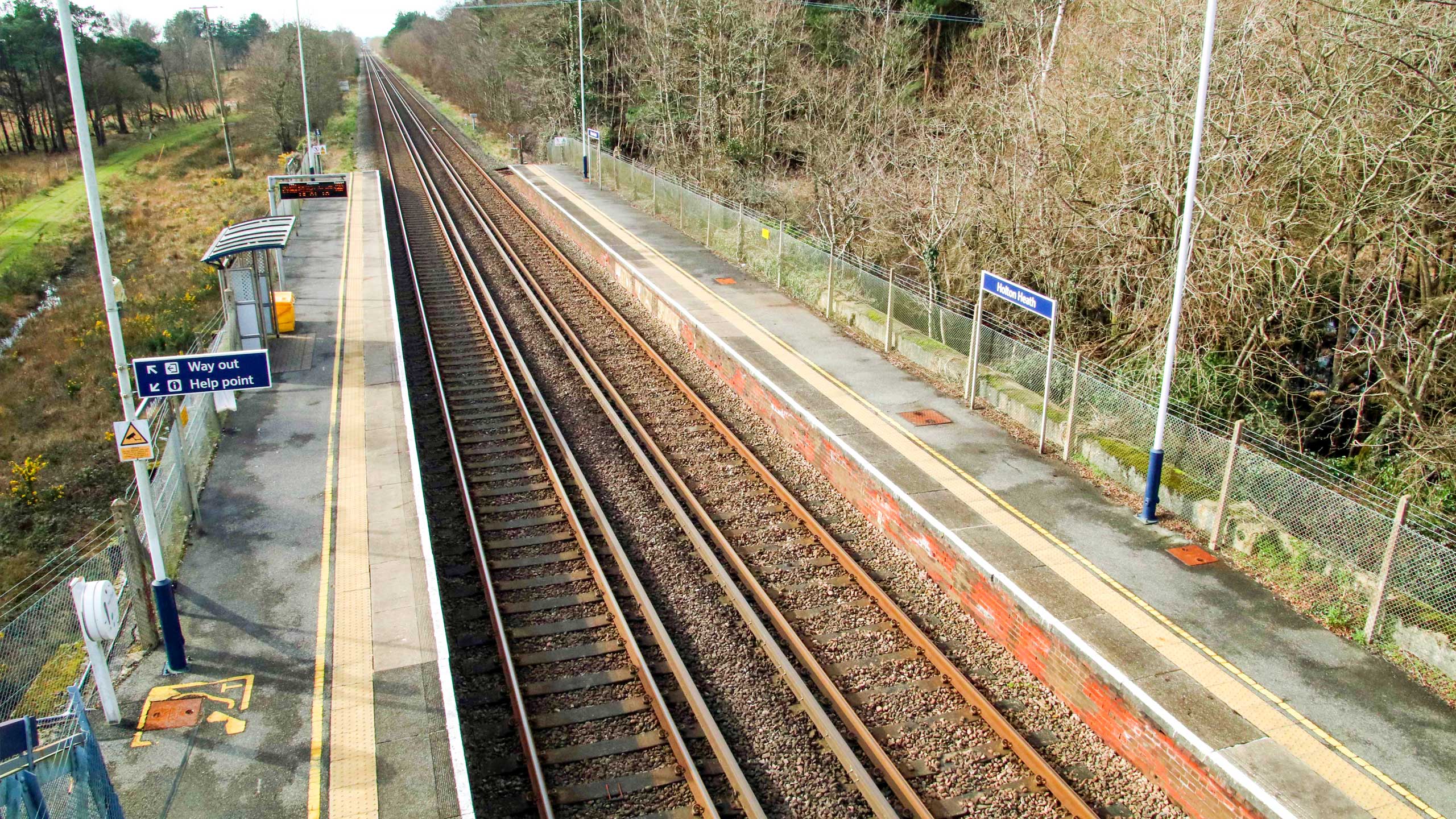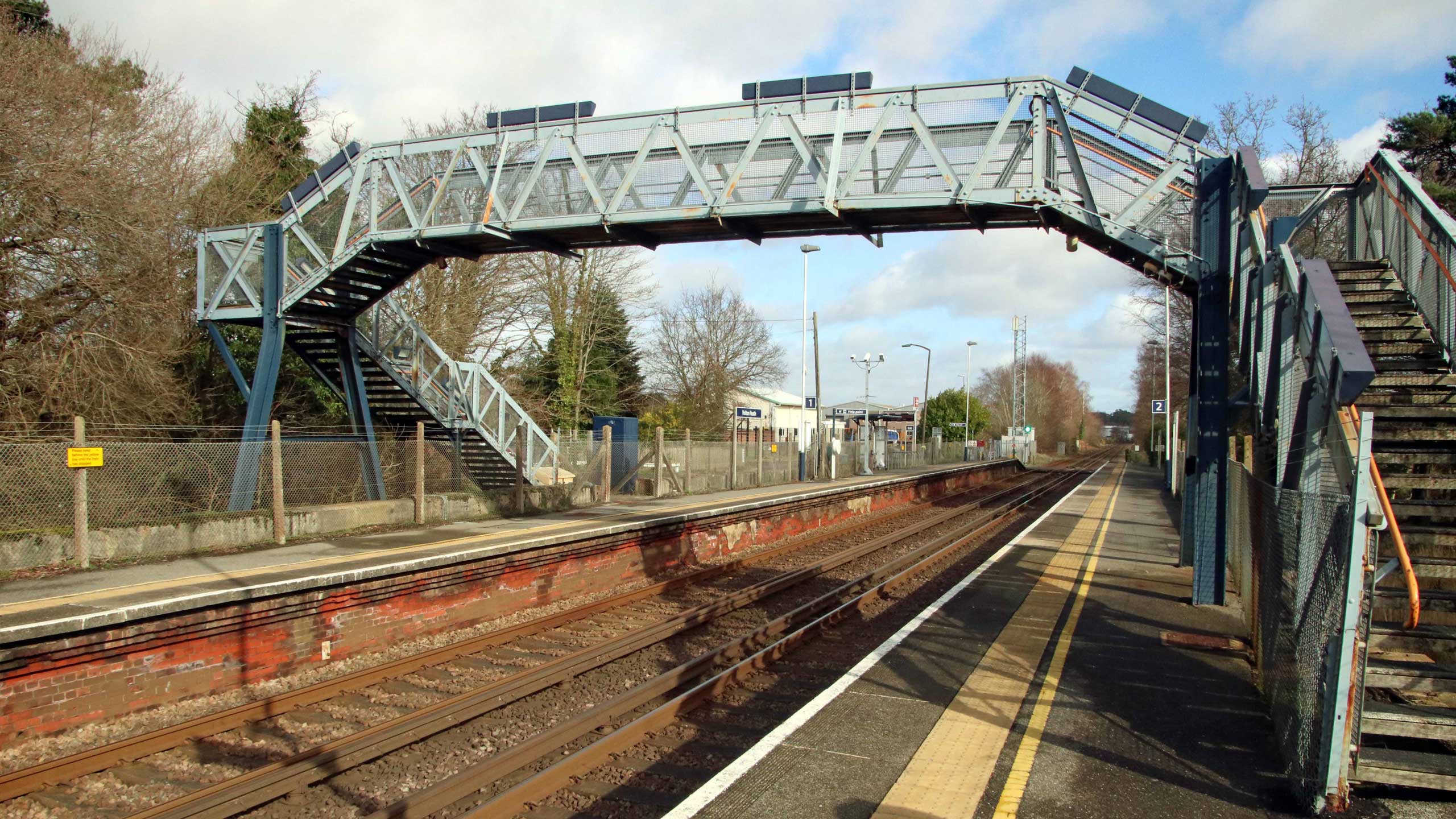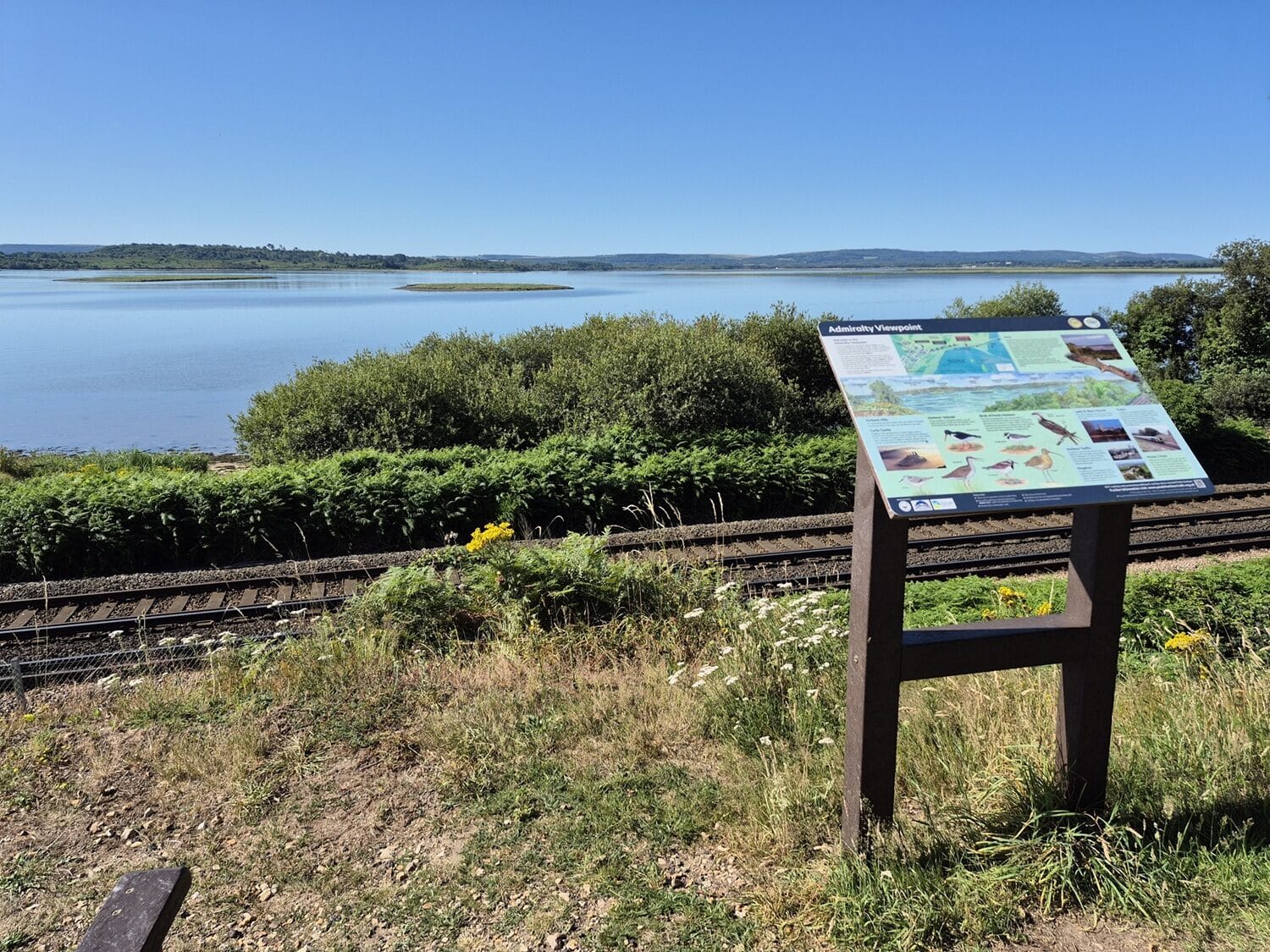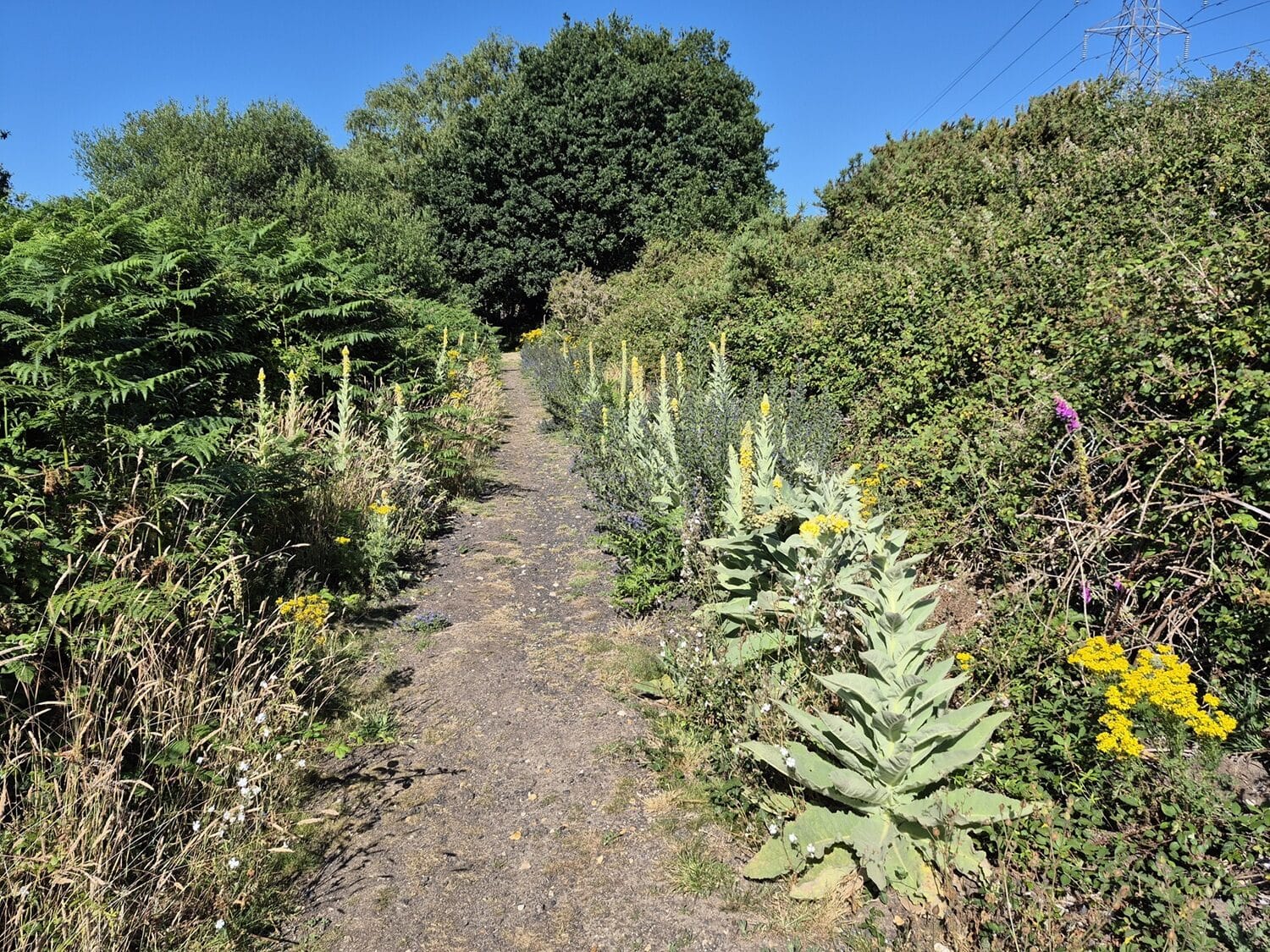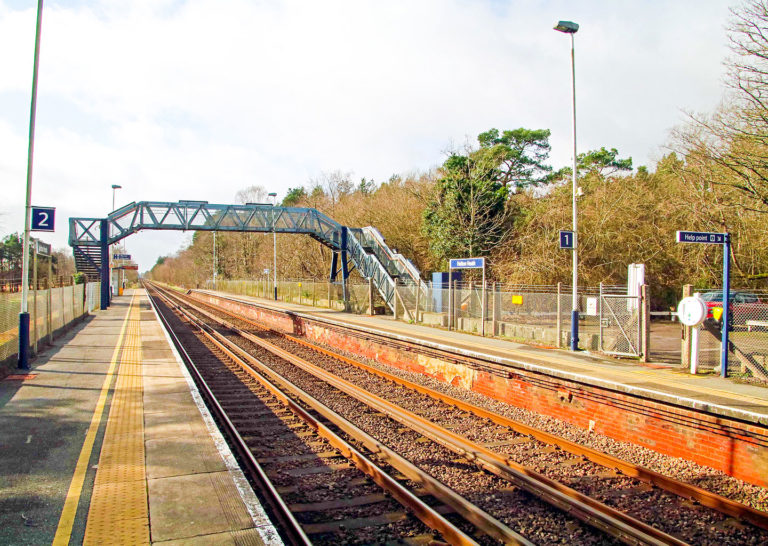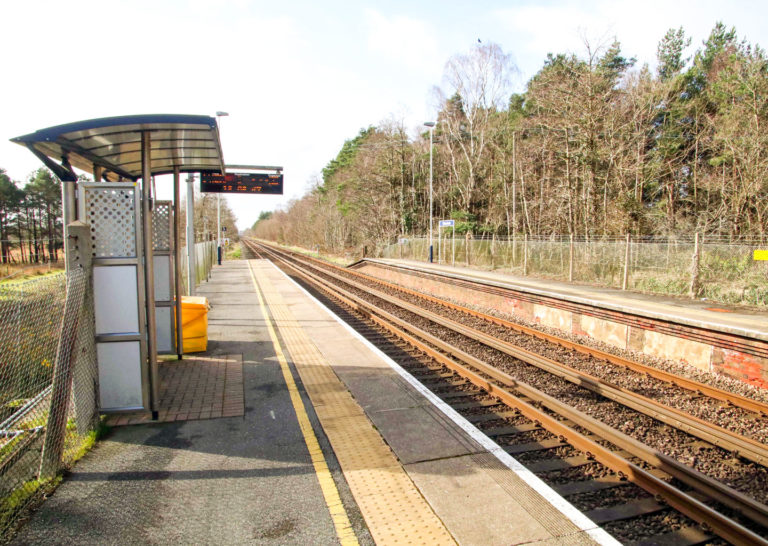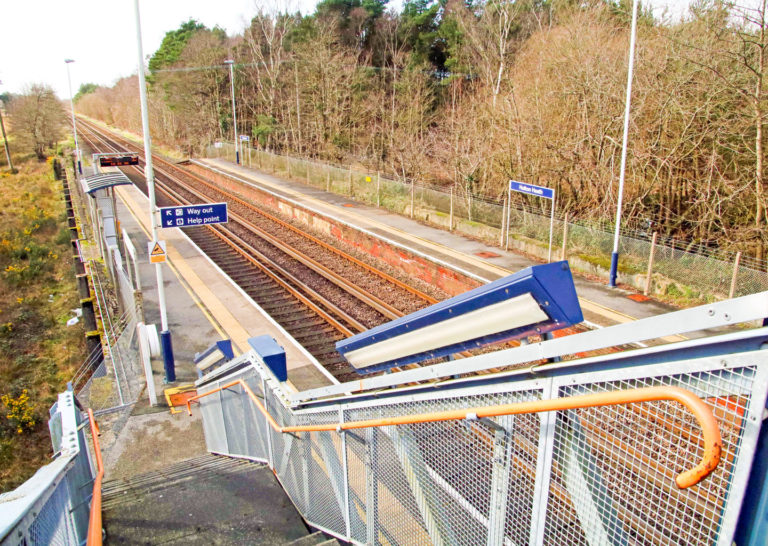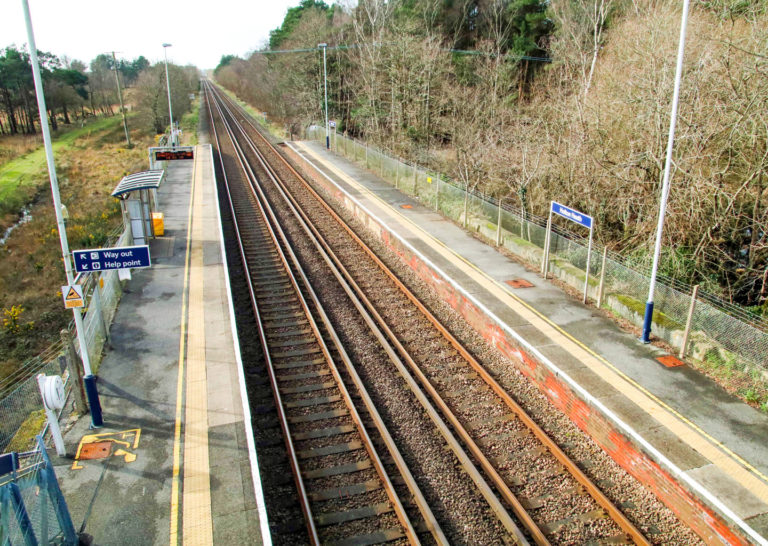Holton Heath is an unmanned station

Holton Heath lies between Holton Lee and Keysworth. It serves two local trading estates, and is the local station for local people in surrounding villages to commute into the conurbation of Bournemouth and Poole. There are two large holiday parks within walking distance so allows easy access for tourists to explore Dorset.
Holton Heath Station 110th Anniversary April 2026
History
Holton Heath Station, located between remote heathland and farmland, opened on 3rd April 1916 to serve the adjacent cordite factory built for the Royal Navy that was used extensively during the First World War. The station opened to the public from 14 July 1924.
Transport connections
Hourly South Western Railway trains call at the station and it is possible to cycle or walk on towards Wareham and Poole. Cycle/walking routes from the station.
Look out for the informative information and history board located at the station entrance.
Places to visit
Opposite the station entrance is the vast area of the Royal Navy cordite factory. Mostly decommissioned in 1945 it is still possible to view the ghostly remains of its many buildings (on private MOD land) through substantial boundary fencing.
Sandford Heath National Nature Reserve is a wildlife haven a 5 minute walk away from the station. Some remnants of the Royal Navy cordite factory defences can be found within the nature reserve.
Discover, Wander, and Enjoy Poole Harbour’s Scenic Trails
Poole Harbour Trails invites you to explore a variety of walking paths that celebrate the unique coastal landscapes and rich natural beauty of the area, inspiring a deeper connection with nature and outdoor adventure.
Cordite Way
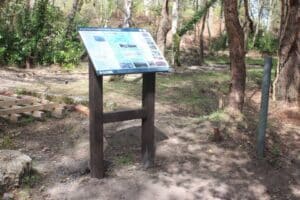 Hidden behind a modern industrial estate, discover the sandy shores of Poole Harbour. Follow the old route of the military railway in its first phase of development to create the Cordite Way. Passing between the water and nature reserves, trace the old ruins down to the trains that still pass today. With views to Poole, Brownsea Island and Arne, end at Admiralty Point, where plans are in motion to replace the bridge and begin Phase 2.
Hidden behind a modern industrial estate, discover the sandy shores of Poole Harbour. Follow the old route of the military railway in its first phase of development to create the Cordite Way. Passing between the water and nature reserves, trace the old ruins down to the trains that still pass today. With views to Poole, Brownsea Island and Arne, end at Admiralty Point, where plans are in motion to replace the bridge and begin Phase 2.
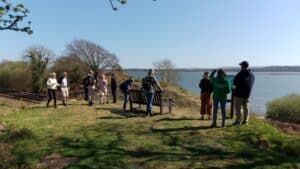
Holton Heath to Wareham – This walk follows the eastern shore of Poole Harbour, passing through heathland and quiet countryside before reaching the historic town of Wareham. The route offers peaceful harbour views and a chance to explore Wareham’s heritage and shops.
For further information please see Poole Harbour Trails
Volunteer information
Holton Heath Station is looking for adoption – Please let us know at if you would be interested in finding out more and wish to take pride in your local station, we would love to hear from you info@purbeckcrp.org.uk
History of Holton Heath
- 1086 – First mention of Holton in the Doomsday Book
- 1841 – 28 inhabitants, two of the four householders were fishermen
- 1847 – The railway was built, it passed north of the cottages between the farmland and the heath.
- 1861 – The original cottages were were replaced with a farmhouse and a barn
- 1915 – Royal Naval Cordite Factory Opens
- 1916 – Station opened for the Admiralty
- 1924 – Station opened to the public
- 1957 – Cordite factory closes, the site becomes a Admiralty Materials Laboratory
- 1997 – The admiralty site at Holton Heath Closes
By the late 1800’s railwaymen were a component of Sandford’s population. Dairy farming was an element of local agriculture, the railway allowing freshmilk to be delivered to the rapidly expanding towns.
Pat Andrews, Sandford Heritage
The cordite factory built at Holton Heath in 1915 needed a workers’ station, sidings and signal box on the main line. It had 14 miles of its own standard narrow gauge railways, including a line to a pier on Poole Harbour opposite Rockley from which cordite was dispatched until 1938. The station became public in 1924, and until the 1950’s Sandford’s newspapers were sorted on its platform.
Pat Andrews, Sandford Heritage
Cordite was the propellant used during much of the 20th century to propel the shells fired by Navy’s guns.At the beginning of the First World War , the First Lord of the Admiralty, Winston Churchill, decided that the Royal Navy needed its own supply of cordite to give a highly reproducible product. Why Holton Heath was chosen as the site for this factory is unknown but it did have several assets. A road to the north and a main line railway to the south. It did not have a local water supply but this was remedied by using a series of artesian wells in the Corfe Mullen area and pumping water to a reservoir on Black Hill.
Bob Dukes, Sandford Heritage
Places of interest in and around Holton Heath

Farmer Palmer's Farm Park
Farmer Palmers is designed for young children, the perfect place to explore! Explore Farmer Palmer’s fantastic activities for you and your family to enjoy! There’s always something to do!
VISIT WEBSITE
Arne
Arne is situated on Poole Harbour, within the Dorset Area of Natural Beauty, and is a stunning landscape consisting of dramatic open heathland and ancient oak woodland.
VISIT WEBSITE
The Sika Trail at Wareham Forest
Cycling is a fantastic way to explore Wareham Forest and soak up the beautiful scenery on our family-friendly routes guarantee an which enjoyable day out for everyone!
VISIT WEBSITE
Wareham Forset
Walk or cycle through heathland and forest next to Morden Bog National Nature Reserve - one of the largest valley mire habitats in England.
VISIT WEBSITEExplore the Isle
of Purbeck
The Isle of Purbeck in south East Dorset is the perfect location to seek, relaxation, adventure and fun, there is something for everyone.
Meet the Purbeck
Community Rail Partnership
The PCRP is part of the Community Rail movement bringing together local groups and partners along railway lines to work with industry and deliver community engagement and promotional activities.

